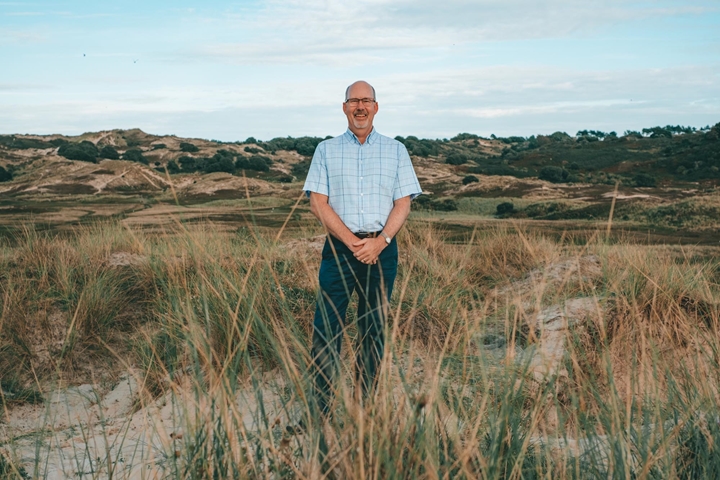

A Geopark is about more than rocks...
A Global Geopark tells the whole story of an area, right from the very beginning. Jersey ~ which has been shaped by tide and time ~ is in the process of applying to become a UNESCO Global Geopark.
Our Ambassadors
Meet our Geopark Ambassadors


Alex Woodman - Young Archaeologists’ Club - Jersey Branch Member - Read more and watch my interview.

Jerry Neil - Jersey National Park - Read more and watch my interview.

Sarah Maguire - Jersey Biodiversity Centre, Volunteer - Read more and watch my interview.

Samantha Blampied - PhD – Local Marine Scientist - Read more.
Frequently Asked Questions
What is a Global Geopark?
A Global Geopark is an area within a boundary which encompasses UNESCO’s values. United Nations Educational, Scientific and Cultural Organization (UNESCO) seeks to build peace through international cooperation in Education, the Sciences and Culture. A global Geopark celebrates an area’s cultural, abiotic, intangible and natural heritages.
The Global Geoparks were created in response to the need to conserve the Earth’s geological history. From their beginning, Global Geoparks have been a ‘bottom-up’, community lead approach working towards conserving and promoting the geological significance of an area, through science and education. This is as well as being used as a sustainable economic asset through developing sustainable tourism.
Why should Jersey be a Global Geopark?
Jersey is a special place for understanding our natural and human history we have exceptional geology, unique heritage, amazing landscapes and special seascapes. A Geopark can tell the whole story and, if Jersey is successful in achieving a designation, it will be a statement of commitment to protect the Island we all love and to promote the landscapes, seascapes and heritage that are important to Islanders.
When was the Global Geoparks Network established?
The Global Geoparks Network (GGN) was established officially in 2015 by UNESCO. The network started in Europe and now has members in over 48 countries around the world.
What is the mission of the Global Geoparks network (GNN)?
‘The GGN is the international organisation of the Global Geoparks and Global Geopark professionals which is committed to the conservation, management and communication to society of the Earth heritage as an integral part of the world’s natural and cultural heritage, tangible and intangible.
Global Geoparks are tools to conserve and enhance the value of areas of geological significance in Earth history, including landscapes and geological formations, which are key witnesses to the evolution of our planet and determinants for our future and to promote sustainable development for example through geo-tourism and education.
Global Geoparks are living, working landscapes where science and local communities engage in a mutually beneficial and safe way. Global Geoparks encourage awareness of the story of the planet as read in the rocks and landscape. Global Geoparks promote the links between geological heritage and all other aspects of the area’s natural and cultural heritage, clearly demonstrating that geodiversity is the foundation of all ecosystems and the basis of human interaction with the landscape.’
What are the main objectives of the Global Geoparks network?
The objectives of the ‘Global Geopark Network’ (GGN) are:
- to promote the equitable geographical establishment, development and professional management of Global geoparks;
- to advance knowledge and understanding of the nature, function and role of Global geoparks;
- to assist local communities to value their natural and cultural heritage;
- to preserve Earth heritage for present and future generations;
- to educate and teach the broad public about issues in geo-sciences and their relation with environmental matters and natural hazards;
- to ensure sustainable socio-economic and cultural development on the natural (or geological) system;
- to foster multi-cultural links between heritage and conservation and the maintenance of geological and cultural diversity, using participatory schemes of partnership and management;
- to stimulate research when appropriate;
- to promote joint initiatives between Global geoparks (e.g. communication, publications, exchange of information, twinning).
Where is the Jersey Island Geopark?
Jersey is a small Island, 14.5 km long and 8 km wide, located in the Bay of St Malo in the south of the English Channel. The Aspiring Geopark includes Jersey’s offshore reefs and territorial waters to the 12-mile limit.
How do you get to Jersey Island Geopark?
Jersey is only a plane or ferry away. Jersey Airport has links to a variety of airports in the UK and Europe. Jersey’s harbour has an international ferry terminal with daily crossings to France, Guernsey and England.
What is the best way to explore the Jersey Island Geopark?
The Island has a network of cliff paths, scenic green lanes and cycle routes offering a eco-friendly way to explore the Geopark. A popular way to explore the Island is by sea through activities like coasteering, snorkelling, diving, kayaking, swimming, surfing, sailing and boating. Take a look at the Visit Jersey website, or at the Jersey Heritage website for information on exploring the Island.